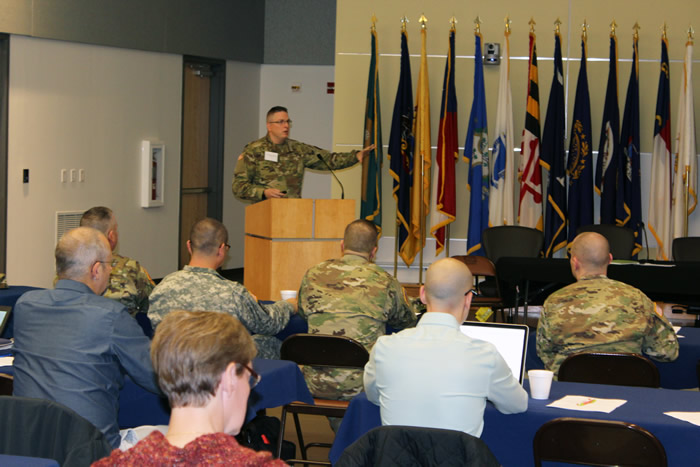USACEHR Hosts Environmental State of the Science Workshop

The U.S. Army Center for Environmental Health Research, a subordinate laboratory of the U.S. Army Medical Research Institute of Chemical Defense, hosted a State of the Science workshop on "Personalized Tools to Support Potential and Actual Health Hazards in the Megacity Operational Environment" at Fort Detrick, Maryland, Oct. 27-28.
The workshop brought together approximately 50 physicians, researchers and military operational medicine experts to discuss scientific issues related to emerging environmental exposure threats from megacities, which is a city with more than 10 million people.
"Opportunities like the State of the Science workshop allow experts in academia, industry and military medicine to come together and assess the current environmental health 'knowns' and 'unknowns,'" said USACEHR Commander Col. Thomas C. Timmes, Ph.D. "We can then set research priorities to ensure force readiness and force health protection."
The main themes discussed included: critical evaluation of realistic, abundant and probable chemical threats in the dense, urban operational environment; the use of far-forward diagnostics in non-agent toxic industrial chemical and materials exposure scenarios; and personalized medicine solutions for environmental health and protection.
The overarching goal of the workshop was to facilitate scientific discussion of these issues and the challenges they pose for assessing health hazards of chemicals. At the conclusion of the workshop, the USACEHR anticipates a series of peer-reviewed position papers on the state of the science of the key topics. The papers will be used to communicate a clear research strategy to key leaders and decision makers.
"Meetings like this provide a unique opportunity for us to network with our colleagues, share critical feedback about research presented and provide support to identify and overcome challenges," said USACEHR Deputy Commander Maj. Jonathan Stallings, Ph.D. "You can't get the synergy and collaboration created at an event like this through teleconferencing. The interaction is irreplaceable."














